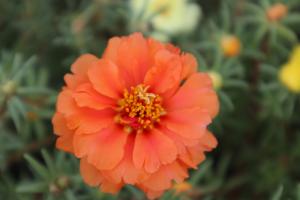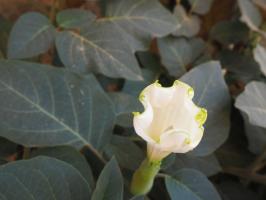Do You Need Multiple Tomato Plants to be Pollinated?
Tomatoes are a staple in many gardens, and for good reason. They are delicious, versatile, and full of nutrients. However, if you are new to gardening tomatoes, you may wonder if you need multiple plants to be pollinated. The short answer is no, but let's explore the topic a bit more.
What is pollination?
Pollination is the process by which pollen from the male reproductive organ of a flower (stamen) makes it to the female reproductive organ (pistil) to fertilize the flower and form a fruit. Tomatoes are self-fertile, meaning that each flower contains both male and female reproductive organs, so they do not require another tomato plant to pollinate them. However, some factors can affect the pollination process, such as weather, pests or lack of pollinators.
Factors that Affect Pollination
The weather plays a crucial role in pollination as it affects flower production, pollen viability, and pollinator activity. Temperatures that are too high or too low can reduce flower production, while gusty winds or heavy rainfall can damage flowers and remove pollen. Pests like aphids, thrips, or spider mites can also affect pollination by eating away at the flower parts, while lack of pollinators like bees or bumblebees can result in low fruit set.
W hat to Do if You are Having Pollination Problems
If you notice that your tomato plant is not producing fruit, or that the fruit is misshaped or unevenly ripened, it might be a pollination issue. Here is what you can do:
Provide a conducive environment- Ensure that your tomato plant has adequate sunlight, water, and nutrients to support flower production and pollen production.
Hand pollinate- Use a small brush or cotton swab to transfer pollen from the stamen to the pistil of each flower. It may seem time-consuming, but hand pollination can significantly improve fruit set and quality.
Manage pests- Regularly inspect your tomato plant for common pests and diseases that can affect flower quality and yield. Apply organic insecticides or fungicides as necessary.
Attract pollinators- Encourage bees, bumblebees, and other pollinators to visit your garden by planting pollinator-friendly plants or providing nesting sites. If necessary, you can also purchase mason bees or leafcutter bees to help with pollination.
Conclusion
While it is not necessary to have multiple tomato plants to pollinate, factors such as weather, pests, or lack of pollinators can affect the pollination process. Taking steps to create a conducive environment, hand pollinating, managing pests, and attracting pollinators can help improve the chances of successful pollination and achieve a bountiful harvest. Happy Tomato growing!

 how many times do yo...
how many times do yo... how many planted tre...
how many planted tre... how many pine trees ...
how many pine trees ... how many pecan trees...
how many pecan trees... how many plants comp...
how many plants comp... how many plants can ...
how many plants can ... how many plants and ...
how many plants and ... how many pepper plan...
how many pepper plan...






























